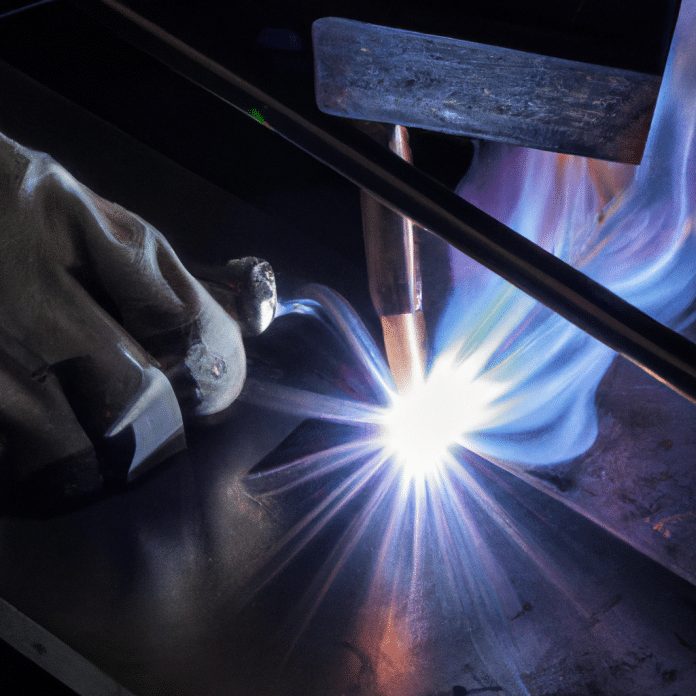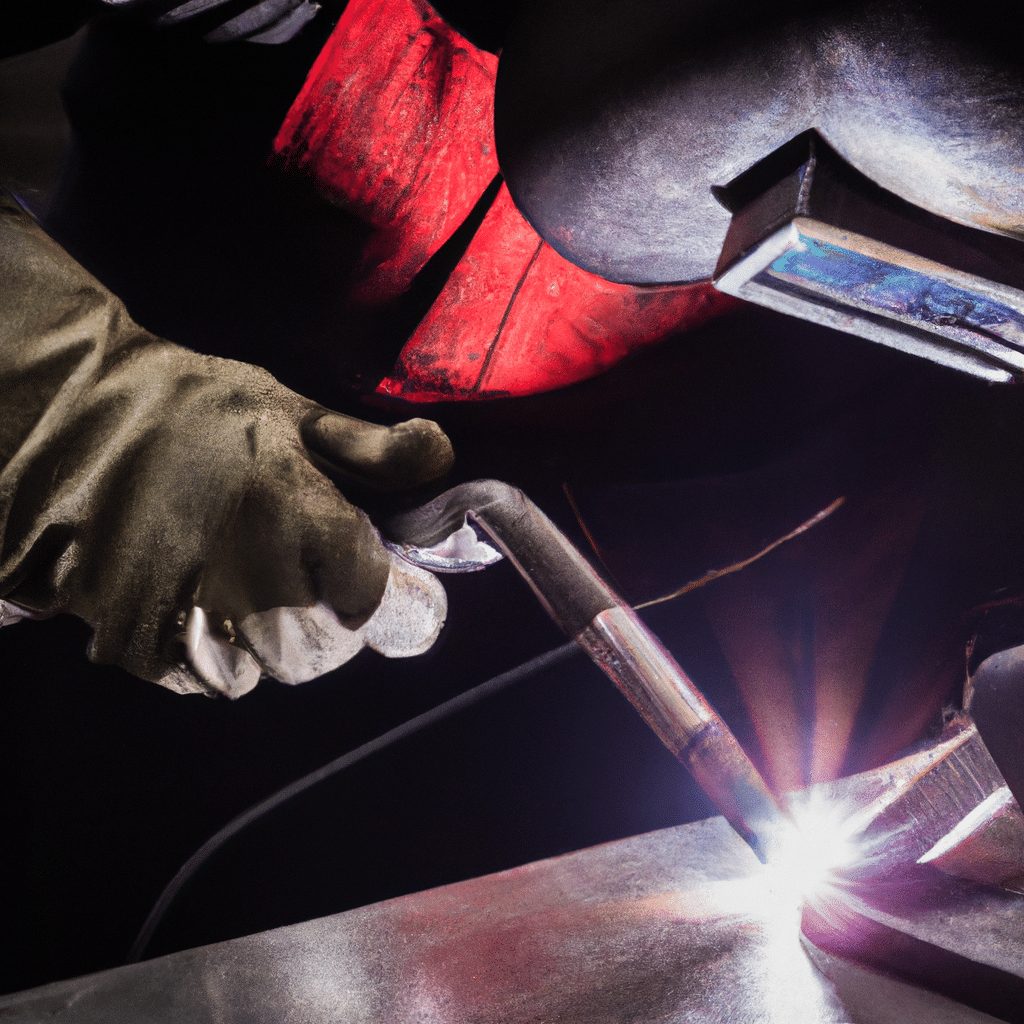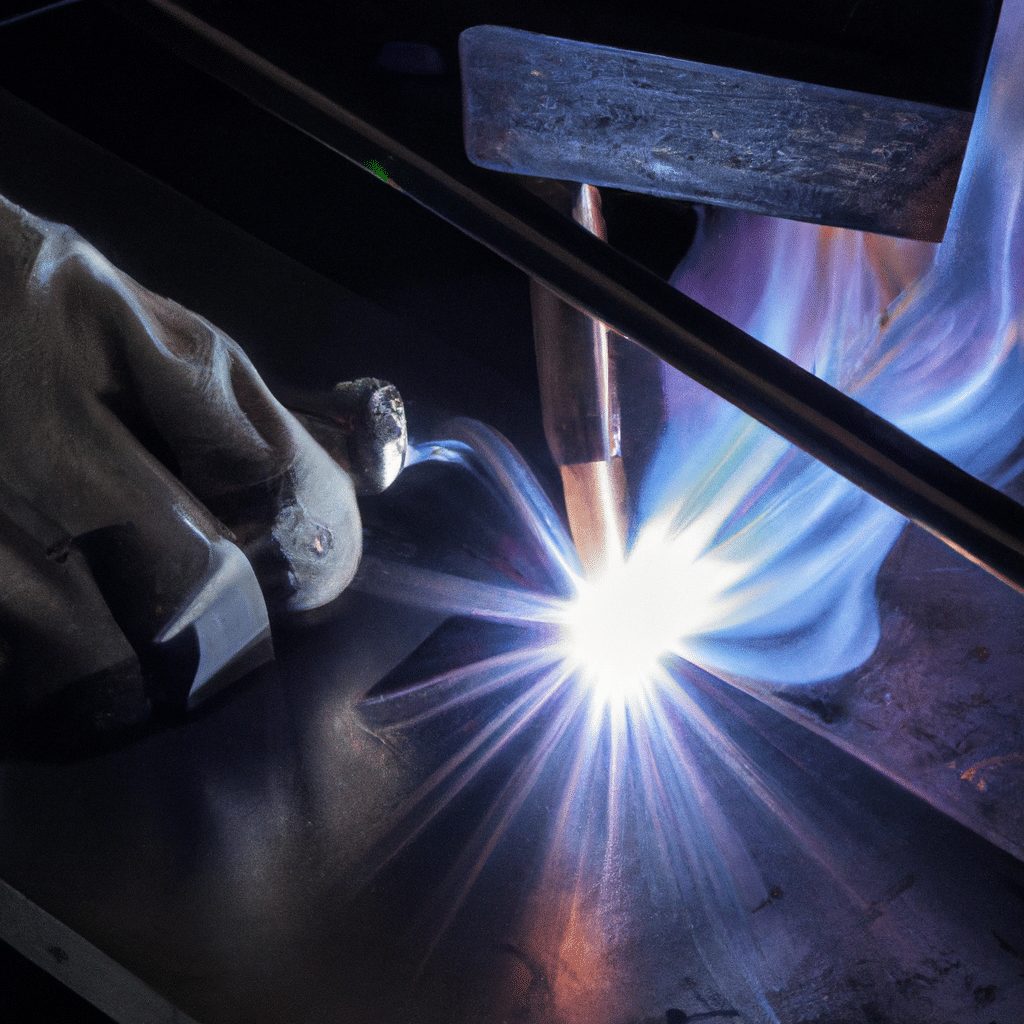Let’s talk about gasless MIG welding and whether it is possible to weld without the need for gas. Many welding enthusiasts and professionals often wonder if using a gasless MIG welder is a viable option for their projects. In this article, we will explore whether gasless MIG welding is a practical technique and discuss its advantages and limitations. So, if you’re curious about this welding method and want to know if it’s the right choice for you, keep reading!
Review contents
Can You Weld With A Gasless MIG Welder?
Understanding Gasless MIG Welding
When it comes to welding, there are several methods and techniques available, each with its own pros and cons. One popular method is gas metal arc welding (GMAW), commonly known as MIG welding. However, MIG welding usually requires the use of a shielding gas to protect the weld from atmospheric contamination. Gasless MIG welding, on the other hand, is a variation of MIG welding that eliminates the need for an external shielding gas. In this article, we will explore the concept of gasless MIG welding, its applications, advantages, and disadvantages, as well as provide tips and techniques for using a gasless MIG welder.
What is a Gasless MIG Welder?
A gasless MIG welder, also known as a flux-cored arc welder (FCAW), is a type of welding machine that utilizes a tubular wire electrode filled with flux instead of requiring an external shielding gas. The flux inside the wire electrode melts during the welding process, creating a gas shield that protects the weld from atmospheric contamination. This eliminates the need for a separate gas cylinder, making gasless MIG welding a more portable and convenient option for certain applications.
Gasless MIG Welding Process
Gasless MIG welding follows a similar process to traditional MIG welding, but with some notable differences. The flux-cored wire electrode is fed through the welding gun, which also serves as the electrode holder. As the wire electrode contacts the workpiece, an electric arc is created, melting the wire and forming the weld. The flux inside the wire then vaporizes, creating a gas shield that protects the weld pool from oxygen and other contaminants. The welder has control over the wire feed speed and the voltage, allowing for adjustments to achieve the desired weld quality and penetration.
Suitable Applications for Gasless MIG Welders
Gasless MIG welding can be suitable for a range of applications, particularly in outdoor or remote locations where access to a shielding gas cylinder may be limited or impractical. It is commonly used in automotive repairs and modifications, such as repairing exhaust systems, chassis work, and body panels. Gasless MIG welding is also popular in construction and fabrication, where portability and ease of use are important factors. Additionally, it can be used for general maintenance and repair tasks, as well as for welding on rusty or dirty materials where a traditional MIG welder may struggle to create a clean and strong weld.
Advantages of Using a Gasless MIG Welder
One of the biggest advantages of using a gasless MIG welder is the portability it offers. Without the need for a separate gas cylinder, gasless MIG welders are lighter and more compact, making them easier to transport and maneuver. Additionally, gasless MIG welding can be performed outdoors or in windy conditions without the need for additional wind shields or gas flow adjustments. The flux within the wire also provides better wetting action and improved penetration, resulting in stronger welds. Gasless MIG welding is also ideal for projects that require high deposition rates, as the flux-cored wire allows for faster welding speeds.
Disadvantages of Using a Gasless MIG Welder
While gasless MIG welding offers several advantages, it is important to consider its limitations as well. One of the main disadvantages is the higher level of smoke and fumes produced during the welding process. The flux within the wire emits a significant amount of smoke, which can be irritating and harmful if proper ventilation is not provided. Gasless MIG welding also tends to produce more spatter compared to traditional MIG welding, which can result in a messier workspace and require more post-weld cleanup. Additionally, gasless MIG welding may not be suitable for applications that require the highest level of weld quality and precision, as it can be more challenging to control the weld puddle compared to traditional MIG welding.
Choosing the Right Gasless MIG Welding Wire
Selecting the correct gasless MIG welding wire is crucial for achieving high-quality welds. The choice of wire will depend on the type of base metal being welded and the desired weld characteristics. It is essential to consider factors such as the wire diameter, flux composition, and compatibility with the welding machine. Consult the manufacturer’s recommendations and guidelines to ensure proper wire selection for your specific application. It is also important to store the welding wire in a dry and clean environment to prevent moisture absorption.
Setting Up a Gasless MIG Welder
Setting up a gasless MIG welder requires attention to detail to ensure optimal performance. Begin by inspecting all the components of the welding machine, including the welding gun, wire feeder, and power source. Check for any signs of damage or wear and ensure that everything is properly connected and secured. Next, install the appropriate wire spool for the desired application, making sure to follow the manufacturer’s instructions for proper installation. Adjust the tension on the wire feeder to prevent the wire from slipping or becoming too tight. Finally, adjust the voltage and wire feed speed settings according to the specifications provided by the welding wire manufacturer and perform test welds to fine-tune the settings.
Gasless MIG Welding Tips and Techniques
To achieve the best results with a gasless MIG welder, it is important to follow some key tips and techniques. Firstly, ensure that the workpiece is clean and free from rust, paint, or other contaminants that may affect the quality of the weld. Secondly, maintain a consistent travel speed and angle to maintain a steady weld pool and achieve proper fusion. It is also essential to select the correct wire diameter and adjust the voltage and wire feed speed settings accordingly. Practice proper technique, such as keeping a short arc length and using a weaving motion for wider welds. Finally, always wear appropriate personal protective equipment, including welding gloves, a welding helmet, and flame-resistant clothing.
Conclusion
Gasless MIG welding offers a convenient and portable alternative to traditional MIG welding, allowing for welding in outdoor or remote locations without the need for a shielding gas cylinder. It is suitable for a range of applications, including automotive repairs, construction, and general maintenance. Gasless MIG welding provides advantages such as portability, better wetting action, and faster deposition rates. However, it also has disadvantages, such as increased smoke and spatter, as well as limitations in achieving the highest level of weld quality and precision. By choosing the right gasless MIG welding wire, setting up the welder correctly, and practicing proper welding techniques, users can achieve excellent results with a gasless MIG welder.





























